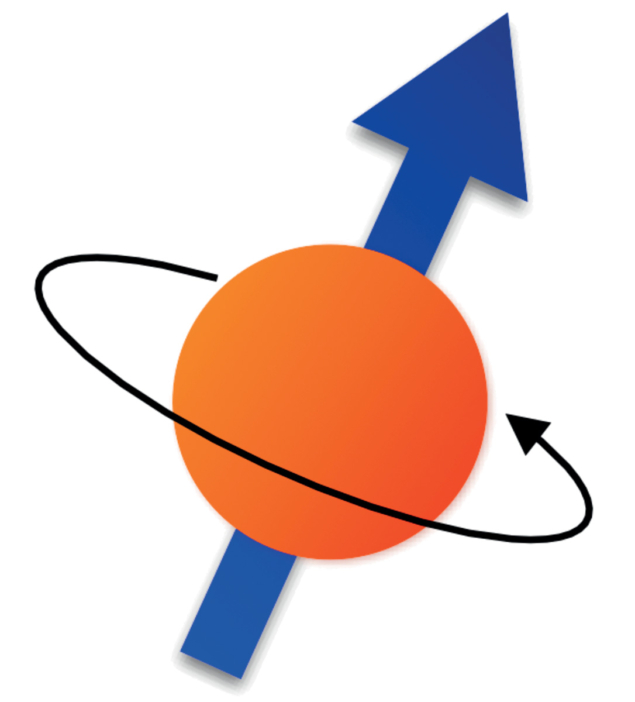
About 90 physicists attended the sixth plenary workshop of the Muon g-2 Theory Initiative, held in Bern from 4 to 8 September, to discuss the status and strategies for future improvements of the Standard Model (SM) prediction for the anomalous magnetic moment of the muon. The meeting was particularly timely given the recent announcement of the results from runs two and three of the Fermilab g-2 experiment (Muon g-2 update sets up showdown with theory), which reduced the uncertainty of the world average to 0.19 ppm, in dire need of a SM prediction at commensurate precision. The main topics of the workshop were the two hadronic contributions to g-2, hadronic vacuum polarisation (HVP) and hadronic light-by-light scattering (HLbL), evaluated either with a lattice–QCD or data-driven approach.
Hadronic vacuum polarisation
The first one-and-a-half days were devoted to the evaluation of HVP – the largest QCD contribution to g-2, whereby a virtual photon briefly transforms into a hadronic “blob” before being reabsorbed – from e+e– data. The session started with a talk from the CMD-3 collaboration at the VEPP-2000 collider, whose recent measurement of the e+e– → π+π– cross section generated shock waves earlier this year by disagreeing (at the level of 2.5–5σ) with all previous measurements used in the Theory Initiative’s 2020 white paper. The programme also featured a comparison with results from the earlier CMD-2 experiment, and a report from seminars and panel discussions organised by the Theory Initiative in March and July on the details of the CMD-3 result. While concerns remain regarding the estimate of certain systematic effects, no major shortcomings could be identified.
Further presentations from BaBar, Belle II, BESIII, KLOE and SND detailed their plans for new measurements of the 2π channel, which in the case of BaBar and KLOE involve large data samples never analysed before for this measurement. Emphasis was put on the role of radiative corrections, including a recent paper by BaBar on additional radiation in initial-state-radiation events and, in general, the development of higher-order Monte Carlo generators. Intensive discussions reflected a broad programme to clarify the extent to which tensions among the experiments can be due to higher-order radiative effects and structure-dependent corrections. Finally, updated combined fits were presented for the 2π and 3π channels, for the former assessing the level of discrepancy among datasets, and for the latter showing improved determinations of isospin-breaking contributions.
CMD-3 generated shock waves by disagreeing with all previous measurements at the level of 2.5-5σ
Six lattice collaborations (BMW, ETMC, Fermilab/HPQCD/MILC, Mainz, RBC/UKQCD, RC*) presented updates on the status of their respective HVP programmes. For the intermediate-window quantity (the contribution of the region of Euclidean time between about 0.4–1.0 fm, making up about one third of the total), a consensus has emerged that differs from e+e–-based evaluations (prior to CMD-3) by about 4σ, while the short-distance window comes out in agreement. Plans for improved evaluations of the long-distance window and isospin-breaking corrections were presented, leading to the expectation of new, full computations for the total HVP contribution in addition to the BMW result in 2024. Several talks addressed detailed comparisons between lattice-QCD and data-driven evaluations, which will allow physicists to better isolate the origin of the differences once more results from each method become available. A presentation on possible beyond-SM effects in the context of the HVP contribution showed that it seems quite unlikely that new physics can be invoked to solve the puzzles.
Light-by-light scattering
The fourth day of the workshop was devoted to the HLbL contribution, whereby the interaction of the muon with the magnetic field is mediated by a hadronic blob connected to three virtual photons. In contrast to HVP, here the data-driven and lattice-QCD evaluations agree. However, reducing the uncertainty by a further factor of two is required in view of the final precision expected from the Fermilab experiment. A number of talks discussed the various contributions that feed into improved phenomenological evaluations, including sub-leading contributions such as axial-vector intermediate states as well as short-distance constraints and their implementation. Updates on HLbL from lattice QCD were presented by the Mainz and RBC/UKQCD groups, as were results on the pseudoscalar transition form factor by ETMC and BMW. The latter in particular allow cross checks of the numerically dominant pseudoscalar- pole contributions between lattice QCD and data-driven evaluations.
It is critical that the Theory Initiative work continues beyond the lifespan of the Fermilab experiment
On the final day, the status of alternative methods to determine the HVP contribution were discussed, first from the MUonE experiment at CERN, then from τ data (by Belle, CLEOc, ALEPH and other LEP experiments). First MUonE results could become available at few-percent precision with data taken in 2025, while a competitive measurement would proceed after Long Shutdown 3. For the τ data, new input is expected from the Belle II experiment, but the critical concern continues to be control over isospin-breaking corrections. Progress in this direction from lattice QCD was presented by the RBC/UKQCD collaboration, together with a roadmap showing how, potentially in combination with data-driven methods, τ data could lead to a robust, complementary determination of the HVP contribution.
The workshop concluded with a discussion on how to converge on a recommendation for the SM prediction in time for the final Fermilab result, expected in 2025, including new information expected from lattice QCD, the BaBar 2π analysis and radiative corrections. A final decision for the procedure for an update of the 2020 white paper is planned to be taken at the next plenary meeting in Japan in September 2024. In view of the long-term developments discussed at the workshop – not least the J-PARC Muon g-2/EDM experiment, due to start taking data in 2028 – it is critical that the work by the Theory Initiative continues beyond the lifespan of the Fermilab experiment, to maximise the amount of information on physics beyond the SM that can be inferred from precision measurements of the anomalous magnetic moment of the muon.








